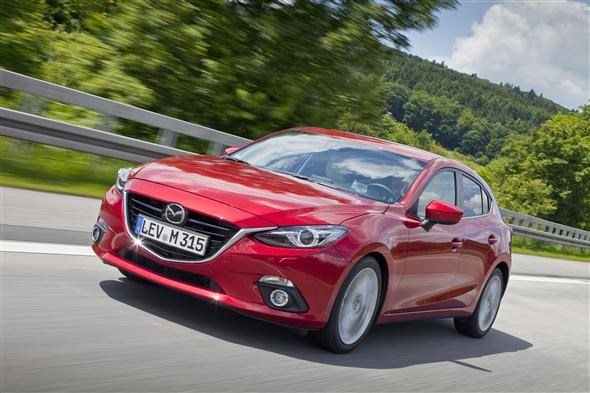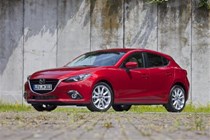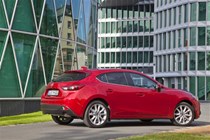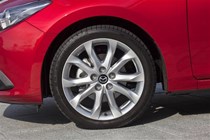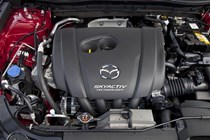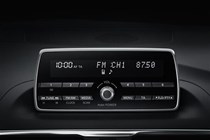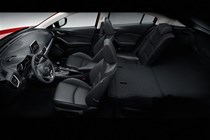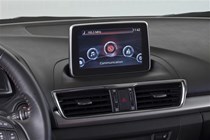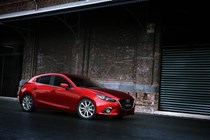The new Mazda3 hatchback, which will do battle against such heavyweight competitors as the Volkswagen Golf and Ford Focus, has some large shoes to fill. To date, the 3 is Mazda’s all-time best-selling model, shifting 3.5 million units over the last 10 years.
We’ve got behind the wheel of some final pre-production test cars for an early preview, and first impressions are good.
For starters, the new car will be cleaner and more efficient. Together with the Mazda CX-5 4x4 and the Mazda6 saloon, the all-new 3 is the third model to be built around Mazda’s much-vaunted ‘SkyActiv’ architecture, which is the company’s umbrella term for its lightweight new engine, transmission and bodyshell designs.
As a result the 2013-on Mazda3 promises to be leaner, greener and better to drive than its predecessor. There are three engines available, two petrol and one diesel, and we’ve had a quick drive in all three.
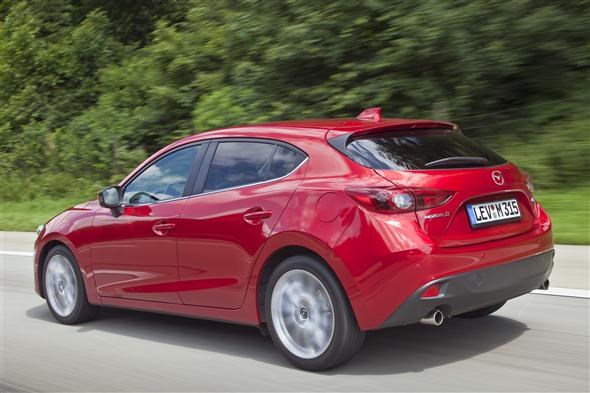
The cars we tested were pre-production machines that, barring a few panel gaps and incomplete bits of interior trim, were representative of the cars that will roll off the production line and be available to order in the UK from December.
As well as a hatchback the 3 will be available as a saloon, which Mazda is calling ‘Fastback’, that’s slightly smaller than a BMW 3 Series. The hatch is expected to be by far the most popular version of the car in the UK, however.
In person it’s a larger than you might expect, being longer than either a Golf or a Focus. Boot space is excellent and there’s plenty of room in the cabin.
Behind the wheel, the driving position is spot-on with well-positioned pedals and a wide range of adjustment for the seat and steering wheel. In appearance the interior is similar to that of the Mazda6 saloon – conventional but pleasant enough and logically laid out. Colour schemes for the lower-spec models look a little dark and drab, though.
Top versions get leather seats and some patches of dubious mock-carbon fibre plastic that look as though they could become easily scratched over time. Overall fit and finish augurs well, however.
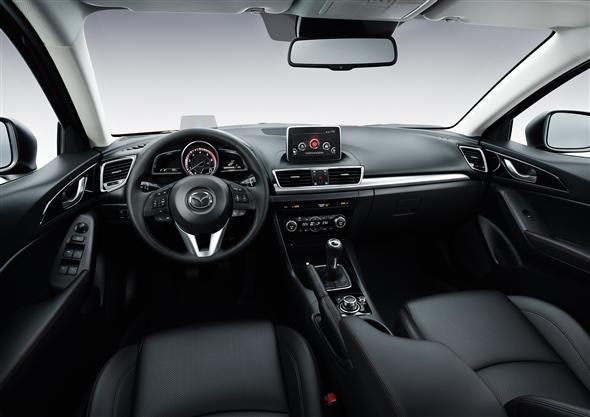
All cars feature a slim media display screen in the centre of the dash, a little like that of the Mercedes-Benz A-Class. Like the Mercedes, it’s not a touchscreen but controlled via a rotary wheel and buttons behind the gearlever, which Mazda believes is a safer and less distracting arrangement than a touchpad. Internet connectivity functions via the driver’s smartphone including radio streaming and social media access will be available.
Instrument panel layout varies from trim to trim, with top versions getting a head-up display. This looked neat but was sometimes a bit hard to see clearly for taller drivers in the cars we tried – hopefully this will be fettled for production versions.
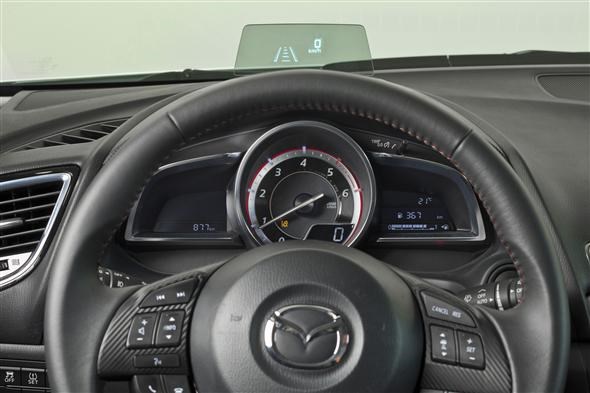
Pouring rain and heavily trafficked roads made it difficult to make any concrete observations about the car’s handling abilities but the signs were good. The damping feels firm but ride quality is good, if a little pattery at low speeds and on rough surfaces.
Major control weights are excellent and the snappy short-throw gearshift, something of a trademark for current Mazdas, is a delight to use.
Automatic transmissions will be available with the larger petrol and diesel engines but all three cars we tested were fitted with the excellent six-speed manual ’box.
2.0 SkyActiv-G petrol
Expected to be the best-seller of the range the same 2.0-litre petrol unit that’s already available in the Mazda6 and CX-5 is available in a choice of 118bhp or 163bhp outputs, the lower taking the lion’s share of sales.
The high-power version is smooth and reasonably quiet, though it takes on a sporty exhaust note towards the upper reaches of the rev range.
Mazda promises average fuel consumption of 55mpg and CO2 emissions of 119g/km for the standard power version, or 48.7mpg and 135g/km for the quicker motor.
1.5 SkyActiv-G petrol
Don’t expect to see a little small-capacity turbo engine like Ford’s EcoBoost series in a Mazda any time soon, hence, the smallest engine available for the 3 is a new 1.5-litre petrol unit with nearly 100bhp.
Like its larger stablemate, it’s silky smooth, but it’s a little noisier and, naturally, less urgent. Claimed average fuel consumption is 55mpg and CO2 emissions are 119g/km.
2.2 SkyActiv-D diesel
Like the 2.0-litre petrol this diesel is already available in the Mazda6 and CX-5 but has gained further improvements in efficiency for the 3. It’s 70kg lighter than the old diesel engine in the outgoing Mazda3.
Smooth and progressive, it feels almost like a petrol engine to drive. It even sounds less rattly and more refined than you’d expect. With nearly 150bhp and lots of torque (380Nm) it feels the most potent of the three engines on offer.
According to Mazda it’ll average nearly 69mpg and emit an excellent 107g/km of CO2.
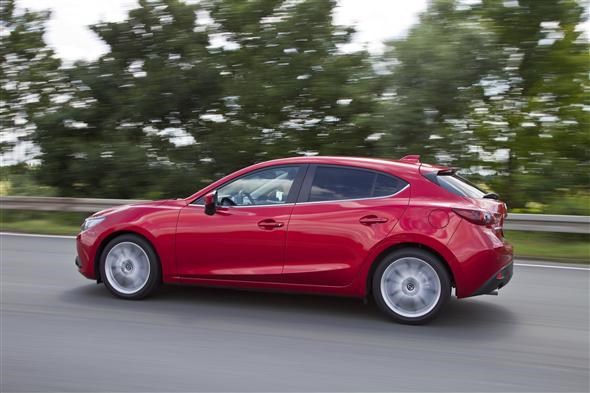
There will be plenty of safety kit available across the range, categorised by a baffling array of acronyms. For example, you can spec your Mazda3 with MRCC (Mazda Radar Cruise Control, which can operate between 19mph and 124mph), SCBSS (Smart City Brake Support, which sounds an audible warning and can perform an emergency stop if it senses an imminent collision) and LDWS (Lane Departure Warning System).
Full UK prices and specifications will be confirmed ahead of the car’s launch late in Autumn, and we’ll be behind the wheel of the final production car soon for a full and comprehensive review which you’ll be able to read here.
Also consider:
Mazda 3 programme manager Kenichiro Saruwatari told Parkers that the current Golf was one of the cars they benchmarked in terms of fit, finish and handling ability. However, they said the 3 aims to be less expensive, more fun to drive and more interesting to look at.
Still a default choice for many buyers looking for a mid-size hatchback, the Focus is practical and good to drive with a wide range of equipment available.
Not as much fun to drive as the Mazda and with less of a premium feel to its interior, but the i30 is a solid product these days that’s hard to ignore.
Just so you know, we may receive a commission or other compensation from the links on this website - read why you should trust us.


